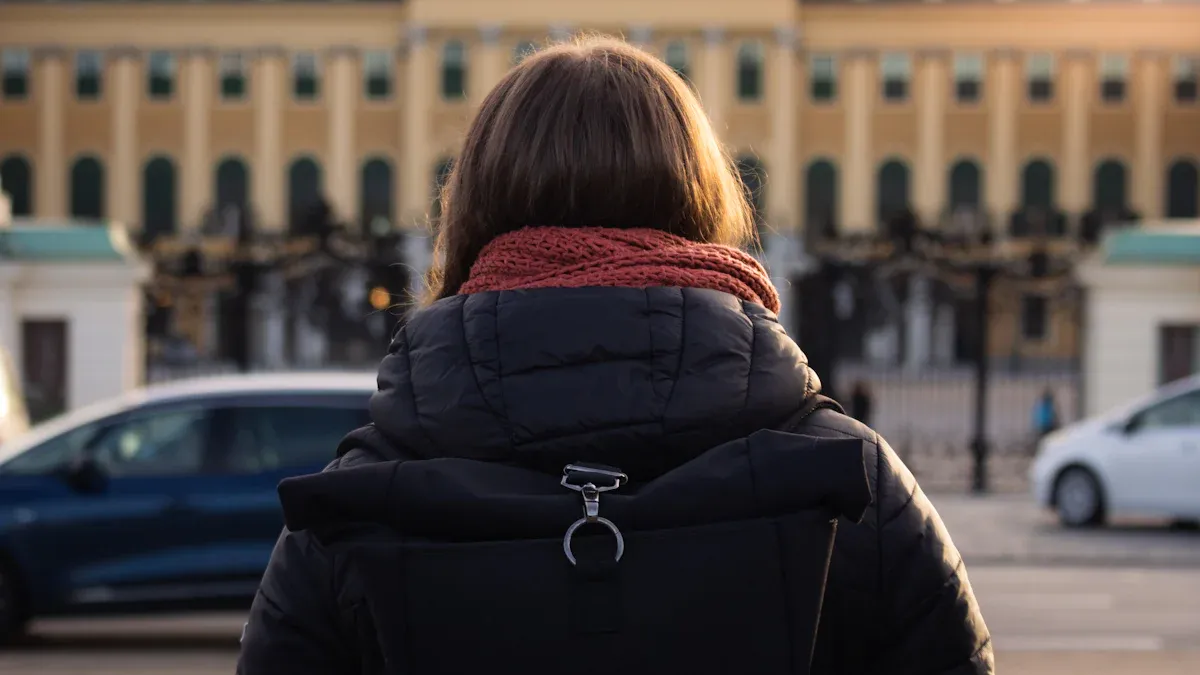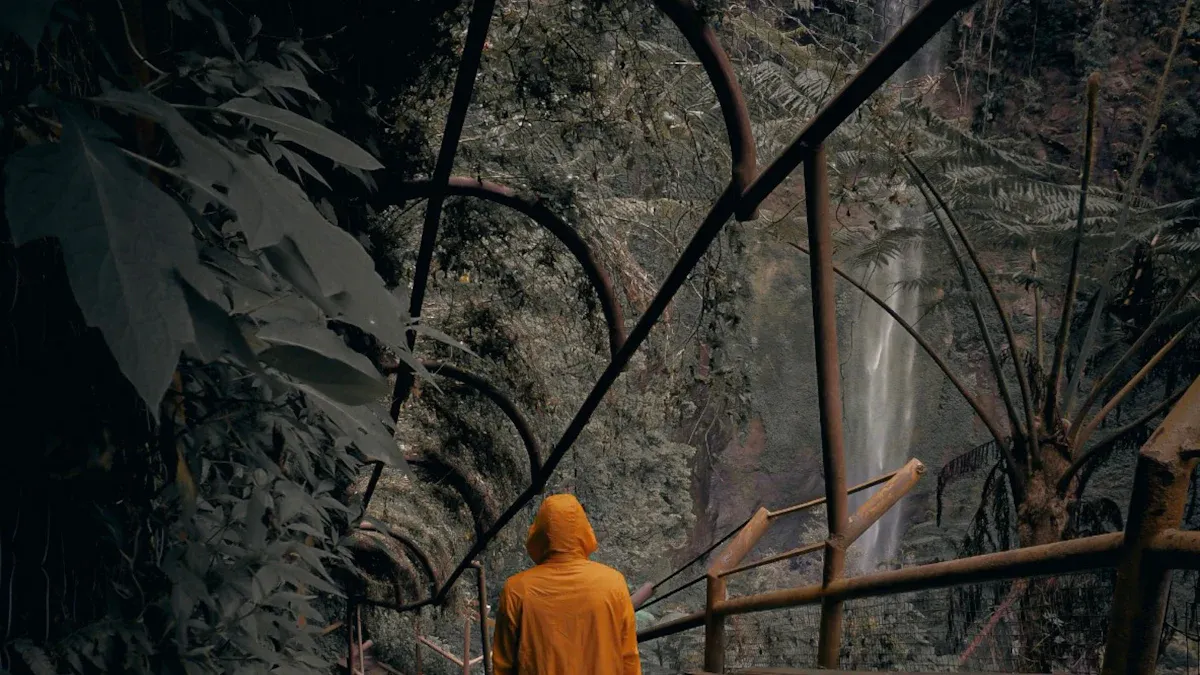What You Need to Know About Import Regulations When Buying Flashlights and Headlamps from China

Understanding customs and import regulations ensures a hassle-free process when sourcing flashlights and headlamps from China. Non-compliance can lead to penalties like classification errors, valuation issues, or intellectual property violations. These fines often depend on merchandise value. A smooth import process reduces costs, avoids delays, and guarantees reliable product quality, especially for Flashlight Wholesale purchases.
Key Takeaways
Learn about import taxes to avoid surprise expenses. Check your country's rules to follow them correctly.
Make sure all documents are correct and finished. Missing forms can cause delays or fines at customs.
Check for safety labels like CE and UL for LED items. Following these rules keeps buyers safe and meets laws.
Key Customs and Import Regulations for Flashlights and Headlamps

Understanding Customs Duties and Taxes
When importing flashlights and headlamps from China, understanding customs duties and taxes is essential. These charges depend on the product classification, which is determined by the Harmonized System (HS) Code. The HS Code helps customs authorities calculate the import duty rate based on the customs value of the goods. You may encounter different types of customs duties, such as ad valorem duties (a percentage of the product's value) or specific duties (a fixed amount per unit). Additional taxes, like VAT or GST, are often applied on top of the customs value and import duties.
Customs and tariffs vary between countries. For example:
Some nations impose higher tariffs to protect local industries, which can affect the cost of importing flashlights.
Rechargeable or LED-based flashlights may have distinct duty rates, making accurate product classification critical.
Special tariffs may apply to goods with specific accessories or environmental impacts.
By researching your destination country's regulations, you can avoid unexpected costs and ensure compliance.
Required Documentation for Importing Flashlights
Proper documentation is crucial for a smooth import process. Missing or incorrect paperwork can lead to delays or penalties. You will need the following documents:
Invoice: Includes transaction details, such as buyer and seller information.
Packing List: Lists the shipment's contents, including quantities and weights.
Certificate of Origin: Confirms the goods' country of origin.
Customs Declaration Form: Provides shipment details and its intended use.
Some shipments may also require an import license or a bill of lading. Ensuring all required documentation is accurate and complete will help you clear customs efficiently.
Import Restrictions and Prohibited Items
Certain import restrictions may apply to flashlights and headlamps. Some countries regulate products with specific materials, such as batteries containing hazardous chemicals. Others may prohibit items that fail to meet safety or environmental standards. For example, the LED lighting industry often faces strict energy efficiency regulations. You should verify whether your products comply with these rules before shipping. Understanding these restrictions will help you avoid fines or confiscation of goods.
Ensuring Compliance When You Import LED Lights from China
Safety Certifications and Standards for Flashlights
When importing LED lighting products, ensuring compliance with safety standards is essential to meet market regulations and protect consumers. Flashlights and headlamps must adhere to specific product certifications depending on the destination market.
CE Marking: Demonstrates compliance with EU safety and environmental standards.
RoHS Compliance: Restricts the use of hazardous materials in electronic devices.
UL Certification: Verifies safety standards for electrical products in the U.S. and Canada.
FCC Compliance: Ensures electromagnetic interference regulations are met.
In the U.S., the UL 913 standard applies to intrinsically safe flashlights, while the European Union enforces the ATEX Directive for equipment used in explosive environments. These certifications ensure that LED lighting manufacturers meet stringent safety requirements, reducing risks for end users.
Labeling and Packaging Requirements
Proper labeling and packaging are critical for regulatory compliance. Major importing countries require specific details to be displayed on flashlights and headlamps.
Requirement | Details |
|---|---|
Supplier’s name or trademark | Must be clearly visible. |
Model identifier | Requires an alphanumeric code. |
Energy efficiency class | Displayed on an A to G scale. |
Energy consumption | Measured in kWh per 1,000 hours. |
Bulb compatibility | Written in any EU language for luminaires. |
Packaging must also meet minimum dimension standards, such as 36 x 76mm for lamps. Following these guidelines ensures your products comply with import regulations and avoid delays during customs clearance.
Environmental and Energy Efficiency Regulations
Environmental regulations play a significant role in the import of LED lighting products. Agencies like the FDA, FCC, and CPSC enforce strict rules to ensure safety and energy efficiency.
Regulatory Body | Requirement |
|---|---|
FDA | Provide the name and address of the manufacturing plant for certain codes. |
FCC | Comply with Part 15 and 18 based on intended use. |
CPSC | Follow the Consumer Products Safety Act for specific lighting products. |
EPCA | Meet mandatory energy efficiency standards. |
UL | Adhere to Underwriter Laboratories standards. |
By working with LED lighting manufacturers that follow a quality management system, you can ensure compliance with these regulations. This approach minimizes risks and helps you maintain a smooth import process.
Step-by-Step Guide to Importing Flashlight Wholesale Products

Researching and Selecting Reliable Suppliers
Finding trustworthy suppliers is the foundation of a successful importation process. When researching potential suppliers for flashlight wholesale purchases, prioritize those with a valid business license. This ensures they operate legally. Evaluate their quality control systems and verify certifications like UL, CE, and RoHS. These certifications confirm compliance with safety and environmental standards.
You can also visit China to inspect manufacturing processes and product quality firsthand. Reliable suppliers often have robust production capacities and transparent operations. Partnering with top LED lighting suppliers reduces risks and ensures consistent quality for your bulk orders.
Tip: Use online platforms like Alibaba or Global Sources to identify suppliers, but always cross-check their credentials before committing.
Conducting Quality Control Inspections
Quality control is essential when you import LED lights from China. Use tools and services to streamline inspections and ensure products meet your standards.
Tool/Service | Description |
|---|---|
Mobile Forms | Capture data on-the-go for inspections. |
Pre-Production Checks | Verify raw materials and initial production. |
Final Pre-Shipment | Inspect finished goods before shipping. |
Analytical Dashboards | Visualize inspection data for better decisions. |
These services help you identify defects early, ensuring your flashlight wholesale products meet safety and performance standards. Comprehensive inspections protect your investment and maintain customer satisfaction.
Arranging Shipping and Logistics
Shipping and logistics play a critical role in the importation process. Challenges like customs compliance, shipping delays, and supply chain disruptions can arise. To mitigate these issues, work with experienced customs brokers. They simplify operations by ensuring accurate documentation and adherence to global trade regulations.
Efficient inventory control is also vital. Track your bulk orders accurately to avoid overstocking or understocking. This approach optimizes warehousing and reduces unnecessary costs.
Note: Partnering with reliable freight forwarders ensures smooth transportation and timely delivery of your LED lighting products.
Clearing Customs and Receiving Goods
Customs clearance is the final step in the importation process. Follow these steps to avoid delays:
Identify the correct HS Code for flashlights.
Include shipping and insurance costs in your documentation.
Apply the appropriate import duty rate.
Calculate additional taxes like VAT or GST.
Incomplete paperwork or non-compliance with regulations can lead to delays. Ensure proper labeling and accurate tariff classifications to streamline the process. Collaborating with customs brokers can further simplify customs clearance and help you receive your goods on time.
Overcoming Common Challenges When You Import from China
Dealing with Delays in Shipping or Customs
Shipping and customs delays can disrupt your supply chain and increase costs. These delays often occur due to incomplete documentation, incorrect tariff classifications, or missing certificates of origin. To minimize these risks, you should ensure all paperwork is accurate and complete before shipment.
One company experienced a two-week delay because their shipment lacked proper tariff classifications and certificates of origin. A customs broker reviewed the documentation, corrected the errors, and ensured compliance with regulations.
You can also adopt proactive strategies to reduce delays:
Work with customs brokers who streamline the customs clearance process and stay updated on trade policy changes.
Use trade management software to optimize operations.
Implement real-time tracking tools to identify potential delays early.
Avoiding Counterfeit or Substandard Products
Counterfeit or low-quality products can harm your reputation and lead to financial losses. To avoid these issues, conduct thorough inspections during manufacturing and before shipment. This ensures product integrity and compliance with safety standards.
Perform pre-production checks to verify raw materials.
Inspect finished goods before shipment to confirm quality.
Use inspection results to hold suppliers accountable for damages or defects.
Partnering with trustworthy lighting suppliers reduces the risk of counterfeit products and ensures consistent quality.
Managing Communication with Suppliers
Effective communication with suppliers is essential for a smooth import process. Language barriers and cultural differences can lead to misunderstandings. To overcome these challenges, adopt best practices:
Respect hierarchies and understand indirect communication styles.
Use tools like WeChat or QQ for faster engagement.
Schedule regular check-ins to discuss progress and address concerns.
Build a feedback loop to encourage open communication.
Clear and structured communication fosters trust and ensures alignment with your suppliers.
Understanding Hidden Costs and Fees
Hidden costs can significantly impact your budget when importing flashlights. These costs include storage fees, delivery expenses, and upfront security deposits. For example:
You may need to rent a warehouse to store flashlights after customs clearance.
If the manufacturer does not provide delivery, you must hire a truck to transport goods.
A non-refundable security deposit of at least 30% is often required upfront.
To manage these costs effectively, use online tools or consult customs brokers to estimate import duties and taxes accurately. Plan for these expenses in your budget and explore duty exemptions through Free Trade Agreements.
Understanding customs authority requirements is essential for a seamless import process. You should verify suppliers and stay updated on regulatory changes to avoid costly mistakes. Trusted suppliers and proper documentation ensure compliance and product quality. By following these steps, you can confidently source reliable LED lighting solutions for your business.
FAQ
What are the most common safety certifications for LED lighting fixtures?
You should look for certifications like CE, RoHS, and UL. These ensure that LED lighting fixtures meet safety, environmental, and performance standards in your target market.
How can you verify the quality of LED lighting fixtures before importing?
Conduct pre-shipment inspections and request product samples. Reliable suppliers often provide detailed reports and certifications to confirm the quality of their LED lighting fixtures.
Are there specific packaging requirements for LED lighting fixtures?
Yes, most countries require clear labeling with energy efficiency ratings, supplier details, and model identifiers. Proper packaging protects LED lighting fixtures during transit and ensures compliance with regulations.
See Also
Comprehensive Tips for Purchasing Wholesale Flashlights from China
Key Quality Guidelines for LED Flashlights from Chinese Suppliers
Expert Insights on Flashlight Production and Quality in China
Strategies for Finding Trustworthy Wholesale Flashlight Suppliers
Ways to Acquire Premium Flashlights for Your Import Business
